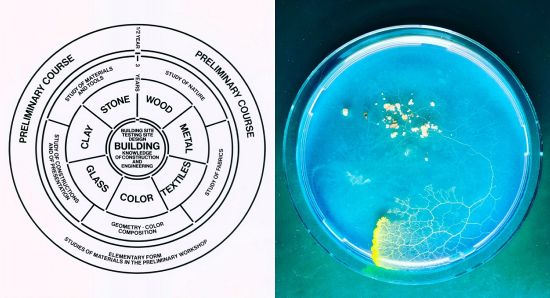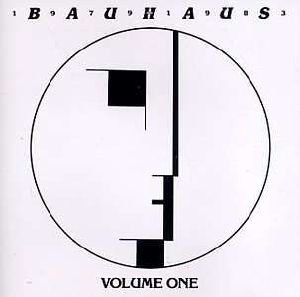Bauhaus feedback loop – traces of Bauhaus
Recombination of two perceptions of art with an Interactive Slime Mold installation
Basic idea
.
We are surrounded by small worlds we can barely see or even guess they are there. What if there would be a possibility so get in touch with those small species. What if we send them a certain message they would reply to. This installation tries to create a feedback loop to connect two beings that don’t speak the same language and try to communicate those two perceptions of defining art. And I invite those two beings to collaborate on the idea of Bauhaus. The human being and the slime mold Physarum Polycephalum. We as human beeings sending the idea of how we see Bauhaus, its shapes, its colors, to Polycephalum and receiving direct feedback of how the Slime Mold perceives it in its own small world. Maybe we can find things in common which will be combined in the Bauhaus Being. Seeing the world with two different point of views and in the end put it together. Getting a new vision or idea of how art can be defined, not only from a human point of view.
About Physarum Polycephalum
Polycephalum is semi-intelligent organism that can remember things and paths it took. He reacts directly to stimuli from the outside by making movements or changing in electric potential within the membrane. This electric potential can be translated into sounds or any other form of art. Drawings, patterns… It also can find the shortest path to the most preferable food source and communicate it to members of the same species. We’ve been experimenting with different food media and one of the colonies painted pink traces in the potato-oat media we cooked. The traces disappear after some time. Everywhere Physarum Polycephalum moves it leaves those chemical slime tracks so it remembers where he has already been in order not to move back to the same place twice. This is a so called external spatial memory it creates. And it also communicates its experience with other colonies in the same area. See my documentation on Polycephalum
Set up
In order to create a two-sided communication, there will be a live set up with a couple of petri dishes that invites the audience to send their personal Bauhaus message to the organism by using provided tools. Such as light in different colors, different food sources etc. The changes are tracked visually with a camera installed above the dish. Membrane potential changes will be tracked with an Arduino set up, that translates the voltage change into something perceptible like sound or patterns or changes in the room set up. The sound could be used to effect LEDs to mimic the plasmodial pulsing within Physarum Polycephalum. As we used Bauhaus messages before, it would be the Bauhaus Pulsing interpreted through Physarum Polycephalum. The audience will be able to feel the Bauhaus together with Physarum Polycephalum and receive a whole new feeling of Bauhaus. All the visuals will be projected to the wall. One dish could give visual feedback and another one could give an acoustic feedback. They both do that at the same time and something new emerges. As it is a living set up it is unsure what will happen.
The behavior of something alive is not predictable. We can only guess what it might do. It is also not predictable what the audience will do with the setup. In some cases Physarum Polycephalum is reacting quite fast and visible to the naked eye. But some changes are longer term changes and so small that they can only be observed with a microscope and over time. The things seen under the microscope will be recorded and put together in a growing timelapse, that will run during the whole installation. In the beginning it will be a really short timelapse whereas in the end it could be an hour long, also documenting the whole process. To sum it up again. The whole thing will be recursive and self emerging. Physarum Polycephalum interacts with its environment, with the audience as well as its own feedback and the feedback of the audience. Everything effects everything with a never ending Bauhaus Loop.





